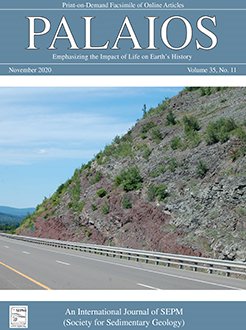A large brachyuran, the blue land crab (Cardisoma guanhumiLatreille, 1825) is a keystone species and a prolific burrower in a variety of low-latitude supratidal habitats; however, few studies have addressed its ichnological aspects. Here we present a detailed morphological assessment of C. guanhumi burrows and make comparisons to Macanopsis plataniformis, a trace fossil thought to be constructed by a similar brachyuran. Using nine burrow casts from a mangrove wetland on San Salvador Island, Bahamas, 29 dimensionless morphometric parameters were compared. Results of Bray-Curtis tests show high overall similarity index (0.85) between casts, with complexity, tortuosity, and opening inclination angle having moderate to high similarity (> 0.8). End chamber angle of the blue land crab has highest similarity both within the modern morphometric parameter dataset (> 0.9) and to that of M. plataniformis (0.88). The large terminal chamber is particularly important because of its high preservation potential, as a repository for organic remains, and as a reliable water table (∼ sea-level) indicator. Cluster analysis suggests size-independent Macanopsis-resembling burrow morphology among different extant taxa can be discriminated via quantitative neoichnological methods. Our findings demonstrate how a quantitative assessment of modern burrows and their likely counterparts from the sedimentary record can help constrain tracemaker identity and aid paleoenvironmental reconstruction of low-energy microtidal settings.
How to translate text using browser tools
24 November 2020
MORPHOMETRY OF BLUE LAND CRAB (CARDISOMA GUANHUMI) BURROWS: ICHNOLOGICAL CONTEXT AND PALEOENVIRONMENTAL IMPLICATIONS
Christopher A. Sparacio,
Ilya V. Buynevich,
H. Allen Curran,
Karen Kopcznski
ACCESS THE FULL ARTICLE
It is not available for individual sale.
This article is only available to subscribers.
It is not available for individual sale.
It is not available for individual sale.

PALAIOS
Vol. 35 • No. 11
November 2020
Vol. 35 • No. 11
November 2020




